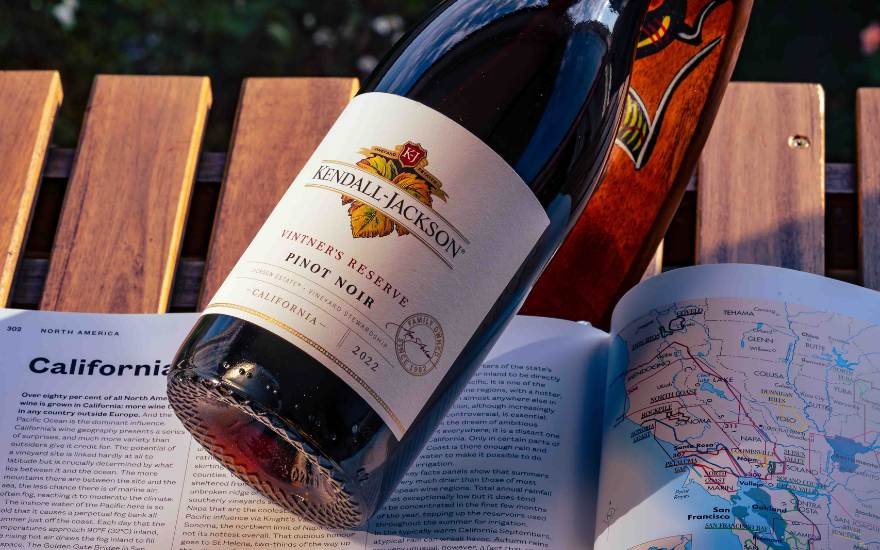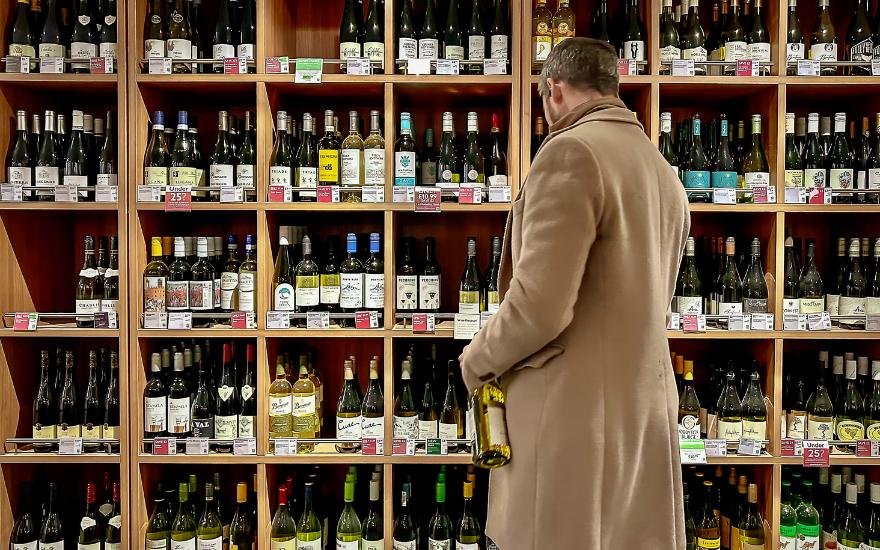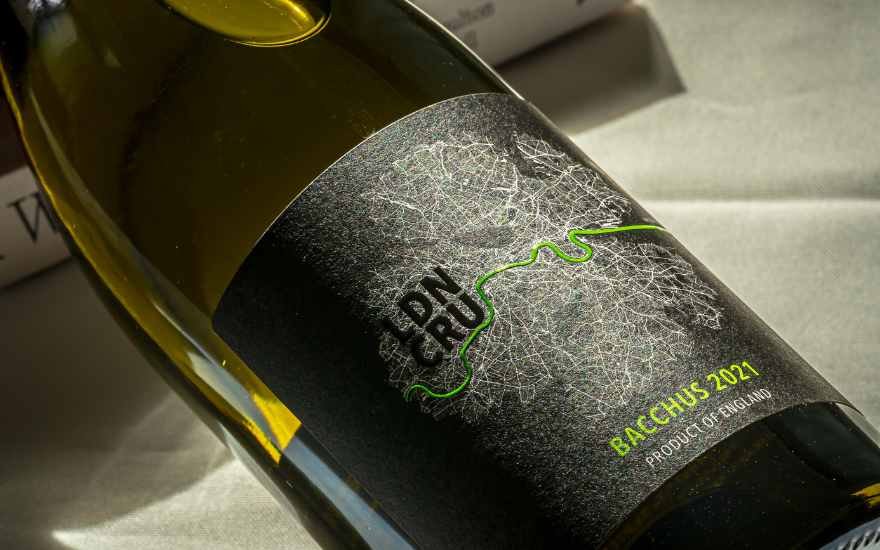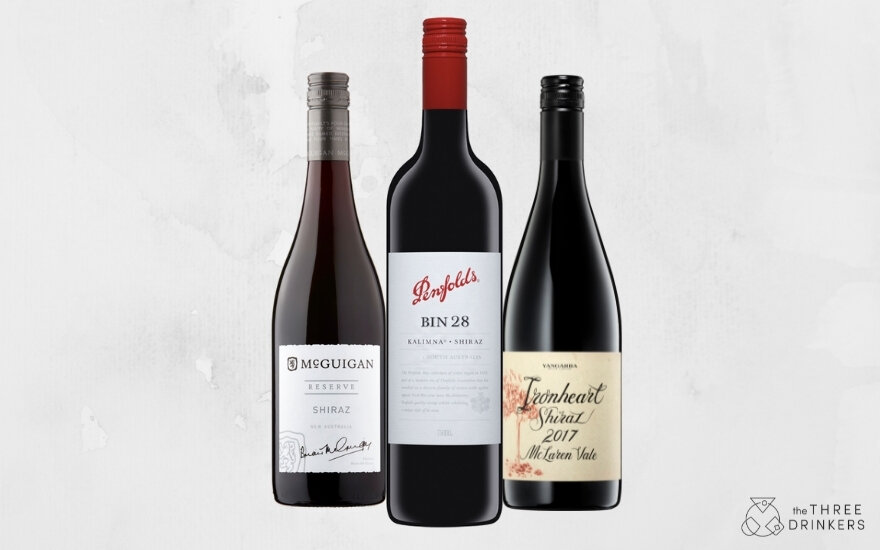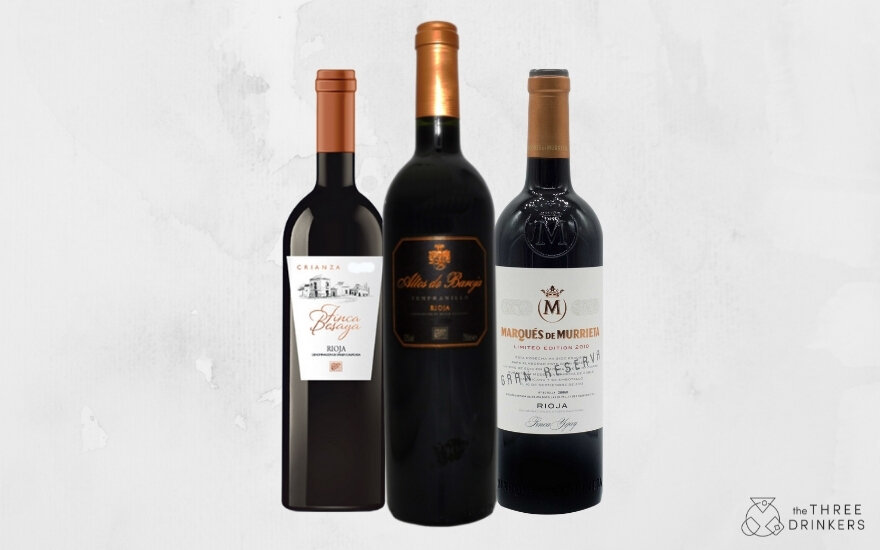Image credit: Deutsches Weininstitut
Pinot Noir
The Diva or ‘heartbreak’ grape from Côte d’Or in Burgundy owes its French name to the black pine cone shaped clusters. It is thought to originate from the first century and predates Cabernet Sauvignon by at least a thousand years. Not many grapes could claim Hollywood theme as seen in the 2004 cult film ‘Sideways’; in which Miles (played by Paul Giamatti) ruminated why he is so obsessed with Pinot Noir:
“It’s a hard grape to grow. It’s thin-skinned, temperamental, ripens early. It’s not a survivor like Cabernet which can grow anywhere. Pinot needs constant care and attention … they can only grow in these specific tucked-away corners of the world; and only the most patient and nurturing of growers can do it … only somebody who takes the time to really understand Pinot’s potential can then coax it into its fullest expression … its flavours are just the most haunting, brilliant and thrilling and subtle and ancient on the planet.”
The early ripening Pinot Noir is extremely sensitive to terroir (both geography and micro-climate). So much so at a parallel tasting of two 2014 Hirsch Vineyards Pinot Noir from the Sonoma Coast in California (East Ridge vs West Ridge), they couldn’t be more different.
Planted somewhere hot, it will ripen too fast and lose all the intricate flavours and nuances Miles is mesmerised with. When done right, Burgundian Grand Crus still set the benchmarks of excellence. Pinot Noir is rarely blended for still wine, except in champagnes with chardonnay and its cousin Pinot Meunier.
Image credit: Vins de Bourgogne
Due to the scarcity of land across Burgundy suitable to grow Pinot Noir, and a distinctive constraint in maintaining high quality with low yields on the slopes, many top growers produce very little Bourgogne and good co-operatives are rare. In Burgundy it is the vineyards that have been classified, not the producers as in Bordeaux. The classification is broadly very accurate which divided the land into four ascending grades, Bourgogne, village, premier cru and grand cru with sky-high prices to match.
A tip is to follow the grower, not the Appellation.
A fine Burgundy red is distinctive with its light ruby appearance, that unique raspberry and earthy bouquet, tarty acidity with low tannins, and refreshing lightness when served at the right temperature. Yet, it can be difficult to know what to expect. Etienne Grivot suggests that terroir is like a music score and the grower is like the conductor, with many and varied interpretations possible.
The 2015 vintage of Musigny, produced by the renowned Domaine Leroy, will set you back £175,000 a bottle before duty and tax. It is hard to find a decent entry level Burgundy red for under £15 in the UK. It might even be more challenging to decipher the complex labels and keep up with the vintages. Fortunately, growers in Germany, New Zealand, Oregon and the coolest corners of California, Australia and now England are developing their own authentic styles as we shall explore below.
Food Pairing
When it comes to food pairing, Pinot Noir is the perfect match for duck, game, roast beef, lamb or pork, and steak tartare. With its relative high acidity and natural earthiness, it complements mushroom and tomato based dishes. It will feel at home with Japanese cuisine such as teriyaki and yakitori.
Whites are naturally served with fish, but a lightly chilled Pinot works wonders with monkfish or seared tuna steak. And if you like cauliflower cheese, a simple red Burgundy with its acidity cuts through the super-rich and creamy cheese sauce, turning a simple meal into elevated pleasures. Or how about the more fanciful Beef Wellington? A Pinot from the Willamette Valley in Oregon is just the ticket.
A less obvious gastro affair revealed in Victoria Moore’s ‘The Wine Dine Dictionary’ suggested by Nigel Greening of Felton Road, Central Otago, New Zealand is sipping Pinot with potatoes roasted with thyme; or udon baked with cream and black truffle!
Image credit: Will Wong
International Pinot Noir Day: 18 August
Shrouded in mystery, no one seems to know for sure why 18 August each year is designated to honour the Diva grape. But that should not stop us from tasting around the globe, with a range of Pinot Noir from twelve regions across nine countries; from Australia to Wales. Seat belts are entirely optional!
They share the fundamental characteristics of Burgundy but that’s also where the similarities end. No two are alike. We travel from the UK High Street to specialist independents offering value-for-money alternatives; including a few organic and biodynamic unfined and unfiltered options.
Above all else, Pinot Noir should be served on the cool side between 14-16ºC. In high summer or even indoors during winter, it’s best to chill the bottle for at least 30 minutes before serving. It is not one to bake in the outdoor sun whilst cooking your favourite BBQ on the patio. Beyond 20ºC, it is very likely to lose its pronounced bouquet, tasting flat if not lifeless. Very few reds will so demonstrably be resurrected when lightly chilled before serving.
AUSTRALIA
Giant Steps Yarra Valley Pinot Noir 2022, Victoria
Image credit: Will Wong
Australia is best known for its legendary Cabernet Sauvignon from Coonawarra or Margaret River, or Shiraz from the Barossa Valley. Much lesser known is her first great cool clime Pinots from the Yarra Valley, northeast of Melbourne in the state of Victoria. The landscape here with its gullies, folds, hillsides, and valley floors undulates so unpredictably that vineyards face all points of the compass. Most of the valley enjoys cool nights, with the nearby Southern Ocean evening out the differences between day and night temperatures.
Giant Steps was founded by the Australian wine industry pioneer Phil Sexton, who ventured from Margaret River to Yarra Valley to find the ideal site to cultivate Chardonnay and Pinot Noir of purity and finesse. Phil found his holy grail near Gruyere in the Sexton vineyard, which he planted in 1997 on the steep slopes of the Warramate Ranges. A mad jazz fan, Phil named the winery after John Coltrane’s album and fitting metaphor “Giant Steps.”
The 100% hand-harvested 2022 fruit was high quality but low yield. Winemaker Mel Chester favours low-intervention, using wild fermentation with eight months in 10% new French oak. The wine was bottled by gravity without fining or filtration.
Darker than some of the other Pinots on our flight, this is a medium-bodied wine of substance. Sour cherries dominate its nose. Robust with medium cellaring potential. More suited as a gastro wine and extremely moreish.
Size: 750ml
ABV: 13%
Find here: £30.00 London End Wines
CHILE
De Martino Reserva Legado Pinot Noir 2022, Limarí
Image credit: Will Wong
In just two decades, Chilean Pinot Noir plantings grew exponentially from around 400 hectares in 1997 to over 4000 today. The grape being notoriously difficult, quality has also improved substantially. Valle del Limarí north of the capital Santiago is right by the Pacific coast. Its limestone soils convey a chalky and mineral expressions in the Pinot.
This is from a selection from the famous Talinay Vineyard, planted around 2008 on the calcareous hills of the Coastal Range in the Limarí Valley, about 13 kilometres from the sea. It spent 12 months ageing in barrels, resulting in a very pale crimson cherry juice with fine tannins and a medium finish. Serve with charcuterie or roast chicken.
Size: 750ml
ABV: 12.5%
Find here: £12.99 Waitrose Cellar
ENGLAND
Riverview Crouch Valley Pinot Noir 2021, Essex
Image credit: Will Wong
Crouch Valley in Essex, southeast England is hot wine property. Here, Chardonnay and Pinot Noir flourish and ripen beautifully to turn into premium still wines. The River Crouch occupies a shallow valley between two ridges of London clay, and it is the combination of this deep and very particular London clay, the steep south-facing vineyards and the protected microclimate of this partially enclosed, tidal estuary that come together in creating this sweet spot as Tamlyn Currin observes.
From Brick Lane to River Crouch
Riverview Crouch Valley is the heart and soul of young husband and wife team Umut and Katie Yesil, who left their flat off Brick Lane in East London for rural Essex. In 2018, they converted 4 hectares /11 acres of family arable land on gentle south-westerly slopes in the village of Hullbridge facing the River Crouch into a vineyard. They make only single varietals: Chardonnay and Pinot Noir as premium still wines; with Pinot Meunier in sparkling wines.
At the end of 2023, Umut and Katie released their first 2021 Pinot Noir, along with their 2021 Chardonnay featured here. In 2024 they will be launching their first sparkling wine, a 100% Pinot Meunier from 2021.
Probably the most mercurial amongst the twelve Pinots here. Never judge a wine by its colour in the glass. Its pale ruby defies the actual substance of their debut Pinot Noir, aged in French oak for 12 months. Dark cherries on the nose with high tart acidity and low tannins. Somewhat Burgundian in character and complexity that pairs beautifully with mushroom risotto.
Very sensitive to temperature change. Must serve cool (14-16ºC) to savour its freshness. On the hottest day of the year in England to date (34ºC on 12 August 2024), the last third warming up in the decanter was poured back into the bottle and quickly re-chilled. The wine was resurrected after 15 minutes. Try it.
This is one wine that should further develop in bottle over the next 3-5 years if stored correctly. Grab a few out of the 900 bottles produced, and report back in 2027!
Size: 750ml
ABV: 12.5%
Find here: £36.00 Riverview Crouch Valley
FRANCE
Burgundy - Definition by Majestic Bourgogne Pinot Noir 2020
Image credit: Will Wong
The Definition range brings the world's greatest wine styles to Majestic customers. A new addition to the refreshed range, this Bourgogne is made by Doudet-Naudin, one of the oldest local and well-respected Maison, founded in 1849 by Albert Brenot in Savigny-lès-Beaune.
Winemaker Christophe Rochet blends grapes from two large plots in the south of the Côte de Beaune, using traditional methods to make a wine with unmistakable Burgundian charm. Aromatics of ripe blackcurrant and cherry are followed by flavours of fruit and spice, and velvety tannins. A natural match for poultry or meats, including sausages, veal escalope, mushroom dishes and pâté. Accessible and good value for a Bourgogne. Oh là là!
Size: 750ml
ABV: 12.5%
Find here: £19.99 or £17.99 Mix Six, Majestic
Jura - Marie-Pierre Chevassu-Fassenet Côtes du Jura Pinot Noir 2023
Image credit: Will Wong
To the east of Burgundy where France rises towards the Alps bordering Switzerland lies the tiny and remote region of Jura, not to be confused with the Scotch whisky. Côtes du Jura is renowned as a gastronomic locus for food and wine pairing. Welcome to the bijou region for organic and ‘natural’ wines in eastern France. With high demand and low supply, Jura wines are rarely seen on supermarket shelves.
Mother of three, Marie-Pierre Chevassu-Fassenet is one of the few female winemakers in the Jura. She took over her family’s wine estate in 2008 and manages her 4.5 hectares from vine to cellar door herself. Located in Château-Chalon, the most traditional part of the Jura, her reds are carefully sorted at harvest and manually de-stemmed before going into CO2-filled tanks to avoid using SO2 at bottling. No oak is used, resulting in a deliciously full-fruit flavour with a touch of CO2 that disappears with some aeration.
She is very keen to keep the estate small, so she can take care of the vineyards personally, and everything is worked in a sustainable way. The atmospheric cellars at the farm are full of old wood from large foudres down to fûts and feuillettes.
Besides its signature bottle shape with JURA embossed across the shoulder, this Pinot is super-fresh when lightly chilled. For such a young wine, its medium body retains a firm structure with soft tannins. Layers of subtle minerality with a long savoury finish. Excellent with Parma Ham and Peaches with a dash of Balsamic Vinegar. Summer in a bottle.
Size: 750ml
ABV: 12%
Find here: £28.10 Les Caves de Pyrene
GERMANY
Pfalz - Walt Pinot Noir 2020
Image credit: Will Wong
Situated to the south-east of Frankfurt, the Pfalz is Germany’s second-largest wine region: a long stretch of vineyards north of Alsace in France forming the Deutsche Weinstrasse, the most famous of all German wine routes along the sunniest and driest part of the country. With the region sheltered by the Haardt mountains to the west, the climate is very similar to that of Alsace. Although Riesling dominates here, we are exploring the sublime yet underrated Spätburgunder (Pinot Noir in German).
Back in 1897, in Wiesbaden, the firm Walter S. Siegel GmbH was started by its eponymous founder. Having acquired vineyards in Westhofen in Rheinhessen, the company was formed to sell his own wines, as well as various prestigious estates in other regions. In 1937 Herr Siegel’s son, Hans, formed Walter S. Siegel Ltd., in London with England Test Cricketer Ian Peebles through which they imported wines from Germany and France.
Light garnet in colour, this easy-drinking Pinot Noir opens up with beautiful aromas of baking spice, strawberry, raspberry, and blueberry. Hints of forest floor and earthy mushrooms. The palate has layered flavours of hearty berries intermingled with savoury notes of spice and minerality. The structure creates an interesting texture that finishes with hints of anise. Pairs well with richer chicken dishes, soft cheeses or tomato-based pasta dishes.
Size: 750ml
ABV: 13.5%
Find here: £12.99 Adnams
Württemberg - Schnaitmann Steinwiege Pinot Noir 2017
Image credit: Will Wong
Despite being Germany’s fourth-largest wine producing region, Württemberg is much lesser known abroad. It has a continental climate that constraints where best to plant vines.
Known as the "Prince of Württemberg”, Rainer Schnaitmann is one of the most respected Pinot Noir producers in Germany. Founded in 1997 with a simple vision, Weingut Schnaitmann is a family-owned winery known for crafting precise and high-quality wines that express the unique terroir of Württemberg. This commitment to detail and sustainability defines their winemaking philosophy.
Organic and Biodynamic, it has a distinctive Burgundian earthy nose revealing sour cherries, blueberries and cassis. For a change, serve this a little on the warm side (16°C). On the palate, it is a little savoury and smokey with silky tannins, suggesting further cellaring potential. Smooth with a long finish. Perfect with German pork knuckle or Black Forest ham with sauerkraut.
Size: 750ml
ABV: 12.5%
Find here: £29.99 The General Wine Company
NEW ZEALAND
Framingham Nobody’s Hero Pinot Noir 2020, Marlborough
Image credit: Will Wong
A small country in terms of population and relatively isolated geographically, New Zealand (NZ) has become a global wine trade export powerhouse in just fifty years. There are many small-scale vineyards with no wineries of their own. Contract winemaking is big business here.
It was Sauvignon Blanc from Marlborough on the northern tip of its South Island that put NZ wines on the world map. Pinot Noir is the most important red wine grape that is mostly planted in Martinborough on the North Island, and Marlborough, Canterbury and Central Ortago on the South Island.
The original vineyard was established in 1981, by Wellingtonian engineer Rex Brooke-Taylor who took the name ‘Framingham’ from his ancestral home town near Norwich, England. This Marlborough winery takes pride in doing things a little differently. Their approach to winemaking is inspired by those who step out of the mainstream, be it music legends, artists or winemakers.
Framingham hosts an outdoor rock concert every year, the Framingham Harvest Concert with an audience of 450-odd people. Up and coming bands from New Zealand take to the stage, including Renwick Nudes the local winery band. Originally a wine cellar and wine library, “Framingham Underground” is now home to pop-up gigs, art exhibitions and a band room where Renwick Nudes practise.
Sour cherries on the nose with intense fruits. First sip: this is bold! Best served lightly chilled and decanted an hour ahead. It took time to open up. Good structure with hints of chocolate mid-palate. Pair with seared tuna steak.
Size: 750ml
ABV: 13.5%
Find here: £17.99 or £12.99 Mix Six Majestic
ROMANIA
Încânta Pinot Noir 2022
Image credit: Will Wong
Despite its Soviet legacy, Romania shares closer cultural affinities with France than its neighbours. Its Pinot Noir was popular abroad in the 1980s and 90s; but did not appeal to Romanians themselves, who prefer their reds big and dark.
In 1988, three families decided to revive the former state-owned 700 hectare Cramele Recas Estate with a 20 million Euro investment. Today, Englishman Philip Cox and his Romanian wife, Elvira co-own this state-of-the-art winery that over-delivers.
Produced for Majestic UK, Încânta is the Romanian verb meaning to enchant, charm or delight. This value-for-money Pinot punches way above its price point – and the 2020 vintage was awarded 90 points by Tim Atkin MW. Serve straight out of the fridge. No need to decant. Enjoy this light and ready-to-drink summer beauty with notes of fresh black cherry, raspberry and cinnamon. Try its juicy flavours with a classic charcuterie board.
Size: 750ml
ABV: 12.5%
Find here: £9.99 or £7.99 Mix Six, Majestic
UNITED STATES
California - Kendall-Jackson Vintner’s Reserve Pinot Noir 2022, Santa Rosa, Sonoma County
Image credit: Will Wong
Over 80% of all North American wine is grown in California (CA), more wine than in any country outside Europe. Across swathes of the huge CA state, summers are much drier than in Europe. Rainfall is concentrated in the early months of the year; topping up the reservoirs essential for summer irrigation. As autumn rains are unusual, the long ripening season contributes to the potency of CA wines in both flavour and alcohol level.
Whilst CA is famed for the bold and long-ageing Cabernet Sauvignon from Napa Valley, Pinot Noir thrives in the cooler coastal vineyards north and south of San Francisco. Up to 80% of the Pinot grapes in this Kendall-Jackson wine were sourced from Monterey and Santa Barbara Counties.
Founded in 1982 by Jess Jackson (1930-2011), a San Francisco lawyer and billionaire wine entrepreneur, Kendall-Jackson’s Chardonnay won the first-ever Platinum Award for an American Chardonnay at The American Wine Competition. He was also one of the first winemakers to introduce varietal-specific wine to America, raising public awareness on wine and making it more affordable.
Since then, Kendall-Jackson has been championing environmental sustainability from energy efficiency to waste management and conservation. In 2019, together with Familia Torres of Spain, Kendall-Jackson co-founded the International Wineries for Climate Action (IWCA) to decarbonise the global wine industry.
Barrel aged in French oak for 8 months, this Pinot Noir has expressive hints of toast, vanilla, and cedar aromas. This dark garnet wine delivers bright cherry, strawberry and raspberry aromas with cola and mild spice accents. Pair with fillet mignon, a stacked burger or cheeseboard.
Size: 750ml
ABV: 14.5%
Find here: £19.99 or £17.99 Mix Six. Majestic
Oregon - Sokol Blosser Estate Pinot Noir 2019, Dundee Hills, Willamette Valley
Image credit: Will Wong
If there is a corner in the Pacific Northwest that resembles Burgundy’s climate, it is the Willamette Valley in Oregon. The Coast Range to its west acts as a buffer, letting Pacific clouds and humidity wash across the vineyards in cool summers and damp autumns. These micro-climate influences lead to earlier maturing Pinots compared with their European counterparts, but earthier and often more complex than those grown in other New World regions.
Their story began in 1971 when Bill Blosser and Susan Sokol Blosser planted their first vines in Dundee Hills. This 128-acre site is blessed with a high altitude and warm nights, and red-tinged volcanic soil with good drainage, and exposure to rainfall and light crucial to optimum ripeness in cloudy Oregon. At the time, there was no wine industry in Oregon. There are now over 900 wineries and more than 37,000 acres of planted vineyards. Today as second generation growers, Alex, Alison and Nik Sokol Blosser continue to shape the ever prominent Oregon wine industry through their commitment to sustainable viticulture and winemaking. Sokol Blosser is a certified B-Corp.
After an inviting black cherry nose, the first sip suggests this is a gutsy organic Pinot with a bold personality. Complex with savoury spice. Medium-bodied with balanced acidity and light oak (17 months in French barriques), its structure will continue to develop over the next three years with careful cellaring. Perfect match with roast duck, mushroom risotto or salmon fillet glazed with Dijon mustard; when served lightly chilled (14-16ºC).
Size: 750ml
ABV: 13%
Find here: £36.40 Les Caves de Pyrene
WALES
Ancre Hill Pinot Noir 2020, Monmouth
Image credit: Will Wong
While English wines have been gaining their well-deserved recognition over the past two decades, there is much to shout about Welsh wines. Their hidden gems are rarely available on the UK High Street. From rural Monmouthshire in the southeast corner of Wales on the border with England, Ancre Hill Estates is Demeter certified biodynamic and organic with minimal intervention in their winemaking.
This magical place and their philosophy enticed winemaker Jean du Plessis to relocate from South Africa with his partner and Max, the black cat on the label to endure quarantine before he was allowed to enter Wales.
With skin maceration, whole bunch pressing and carbonic maceration, fermentation was finished in oak and stainless steel for ageing on gross lees for a minimum of two years. No filtration, no fining. It throws a little sediment so best stand the bottle upright for an hour in the fridge before decanting.
This super-light organic and biodynamic Pinot at 11% ABV is perfect for the summer. It is just so so fresh. Utterly moreish and quaffable when lightly chilled. With no insecticides, pesticides or herbicides from grape to bottle, it’s not cheap but you will taste the difference.
Size: 750ml
ABV: 11%
Find here: £34.20 Les Caves de Pyrene
BEFORE WE GO …
We hope the above discovery world tour has inspired you to try the different styles beyond Burgundy and New Zealand. If you are new to Pinot Noir, its inherent earthiness sets it apart from most other reds.
The Diva grape is not born for the bargain booze trade. With Burgundy prices on the rise, better value is found in say, Languedoc in the south of France.
The early ripening Pinot is facing serious challenges from climate change and global warming. If freshness and a sense of place are what appeal, look for cool clime Pinots from England, Wales, Germany, Tasmania and perhaps Oregon (US). Quality comes with a price and these regions could not compete with Chile or South Africa on volume or their much lower costs of production.
And if you remember what Miles said in the film ‘Sideways’, that most haunting and ancient flavours on the planet await. Merlot is altogether a different story and sour grape for him.
By Will Wong













